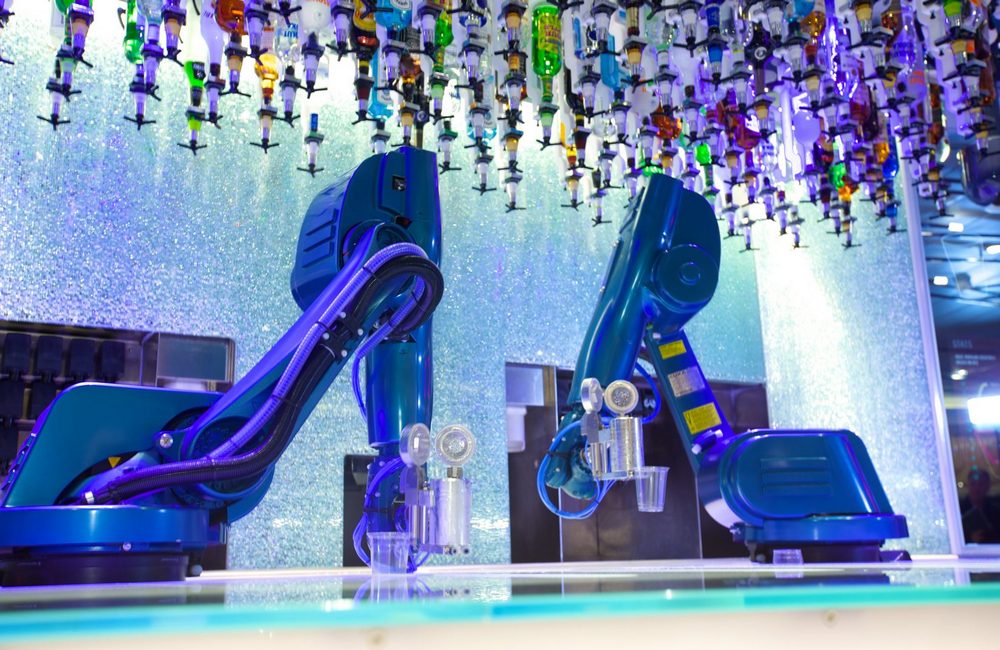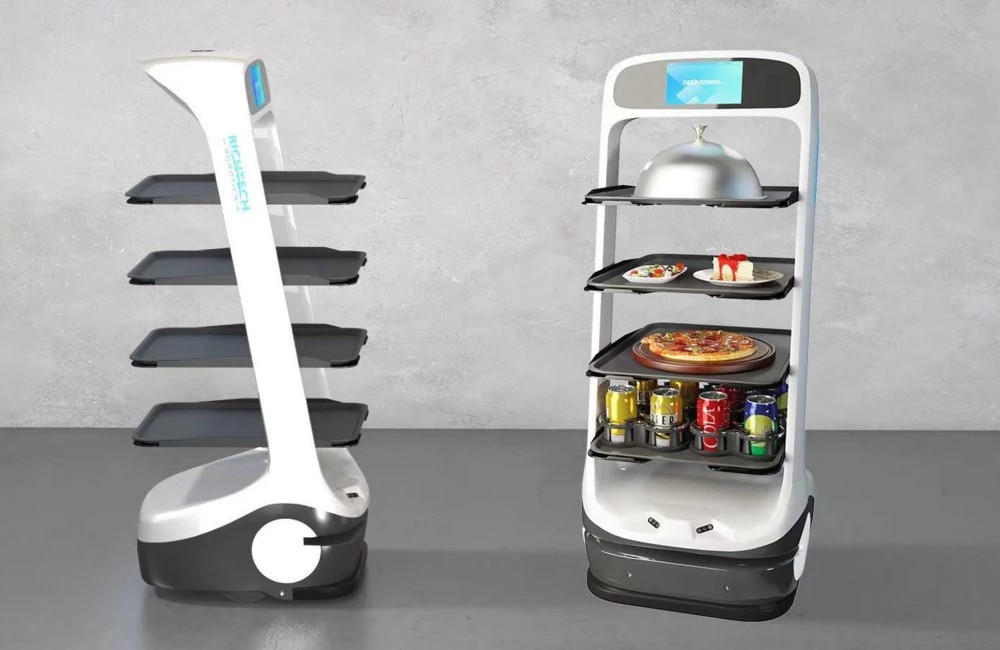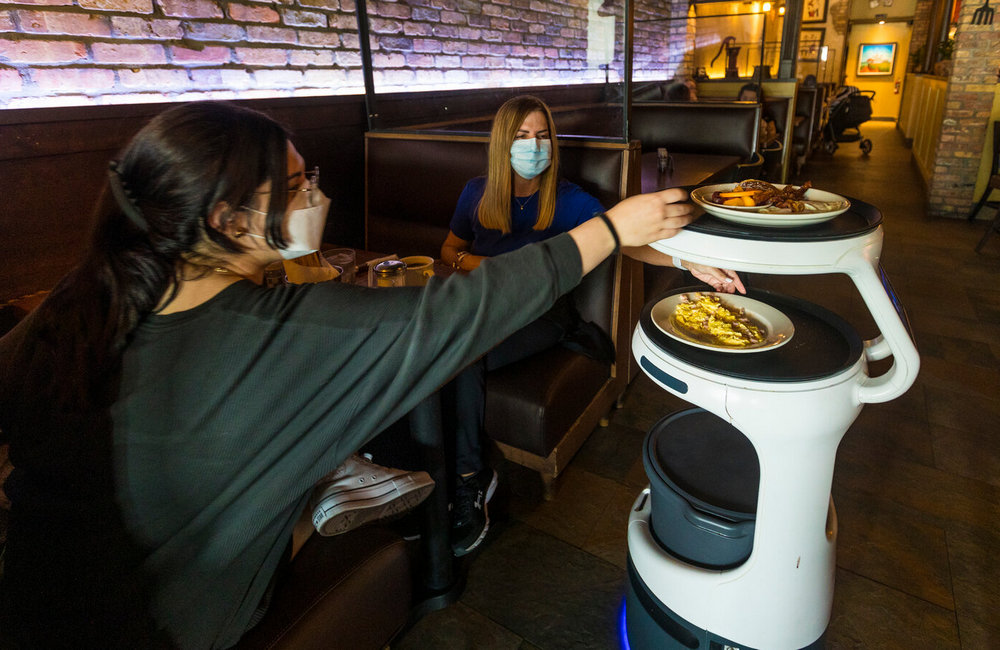Dining at a restaurant where robots serve you sounds like something out of the Jetsons, but each day, we get a little closer to this reality. Thanks to the pandemic and staff shortages, automation in the restaurant industry has really taken off.
Today, there are several companies working on restaurant robots, and many eateries that have already adopted a restaurant automation system.
Meet the Robots in the Restaurant Industry
Robots can change the restaurant industry in many ways, from automating the cooking process to serving and seating customers. This technology is developing rapidly, and some restaurants are already fully automated along with standard restaurant equipment.

Several companies are helping pave the way for robots in the restaurant industry. As the technology becomes more affordable, more restaurant owners will incorporate them into their kitchens and floor staff. Some of the companies innovating technology in the restaurant industry and robotics include:
Autotec
Autotec has been around since the 1960s, when they launched as an audio equipment manufacturer. In the 1980s, the company produced a toy sushi maker. Later, they would create an automatic sushi maker.
Now, Autotec has developed four sushi robots to automate the sushi-making process:
- A rice sheet maker
- A maki cutter
- A rice mixer
These robots can handle most of the tasks of sushi-making, aside from plating. They work quickly, too. For example, the rice sheet maker can produce up to 300 rice sheets in just 15 minutes.
Autotec's sushi robots are compact enough to sit on a countertop, and they require minimal staff training.
Nala Robotics
Nala Robotics has been in business for more than five years. The company has three fully automated restaurants. Each restaurant is staffed by just one person, and all other tasks are handled by robots.
Currently, their robots can perform virtually all of a chef's tasks, with the exception of plating and cleaning. However, the company is working on adding these features in the near future.
Once a recipe is inputted into the robot, it will create the same dish the same way every time. Consistency is one key advantage that this robot offers, and it's one that's hard to replicate with a human.
One advantage that Nala Robotics offers is that its system is modular and customizable to the restaurant owner's individual needs. Built-in sensors allow these robots to work alongside humans easily.
Training is minimal, but the cost to purchase a robot can be prohibitive for most restaurant owners. Nala Robotics does offer options for leasing and direct purchasing.
Richtech Robotics
Based in China, Richtech Robotics has been around for two decades. However, they've only recently broken into the U.S. market. That said, there's been a great deal of interest in their offerings.

The company offers two robots:
- Adam: A barista
- Matradee: A food runner
Adam has a dual-arm system that can produce coffee drinks based on the recipes programmed by the eatery. The company has also been testing Adam for pouring beer and wine. The robot can pick up and tilt a cup with one hand and turn on the tap with the other.
The robot will likely work behind a bar or counter.
In addition to the companies listed above, there are several others that are working on robots to act as bussers and runners. These are robots that clear tables and bring food to tables.
Eateries That Are Adopting Restaurant Kitchen Automation
Robots may seem like new restaurant industry technology (and they are), but many eateries have already begun adopting restaurant automation. Here are some food establishments that are using this new restaurant technology.
Spyce Restaurant (Boston, MA)
Spyce is a fast-casual restaurant with a fully robotic kitchen. The establishment still employs a small staff to prepare ingredients in an off-site kitchen, but the cooking is done exclusively by the robots.
Guests place their orders at kiosks.
The restaurant itself has two employees that provide customer service and put the finishing touches on the dishes.
Bionic Bar on Royal Caribbean Cruise Ships
Royal Caribbean is outfitting some of their cruise ships with robotic bars that make cocktails for guests. Guests just have to scan their IDs, and the robot will add the person's drink to its queue. Guests can see which ingredient is being added to each cocktail and when their order is ready.
Creator (Daly, CA)
The creator is a burger restaurant in Daly, CA that uses robots to make each burger. They focus on high-quality, local ingredients. Best of all, their burgers are affordable - and pretty tasty, according to guests.
Costco Pizza
While many other restaurants are increasing the prices of their food, Costco has managed to keep its pizza affordable. How? By using robotics.
Costco uses automation to speed up the pizza-making process, saving time and costs. Here's how it works:
- Employees start by flattening the dough using a press machine.
- The dough is transferred to a saucing machine, where it's spun around for even distribution.
- Finally, an employee spreads the cheese by hand before placing it in the oven.
Costco's oven runs on a conveyor belt to speed things up. It takes less than six minutes to assemble and bake a pizza.

Chilli's
The well-known restaurant chain Chili's has partnered with Bear Robotics to begin using Rita the Robot in their restaurants.
Rita can do a few things:
- Seat customers
- Deliver food to tables
- Carry dishes back to the kitchen
- Sing birthday greetings to customers
Domino's
Pizza giant Domino's adopted restaurant automation software years ago. The company is famous for its pizza tracker, which lets customers know where their pizza is and when it will arrive at their doors.
They've also launched a service that allows customers to place orders using Google Home and Amazon Alexa.
The company is now working on using autonomous vehicles for deliveries.
Final Thoughts
New technology in the restaurant industry is constantly evolving, but robots seem to be making the biggest headway. Faced with staff shortages, rising inflation, and other cost concerns, many restaurant owners view robots as a smart investment. Along with saving on costs, these robots can also improve the customer experience and ensure consistent quality.


